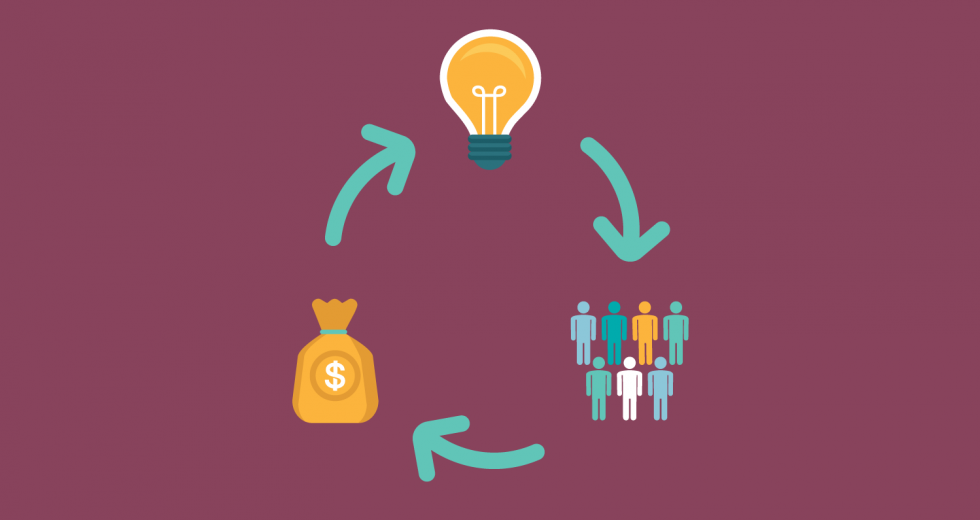The wisdom of crowds can be a remarkably potent thing. For example, Adam Smith’s famous phrase “invisible hand” identifies the phenomenon in which buyers and sellers collectively determine value better than any one person can. There’s also a well-known case in which, at a 1906 country fair, statistician Francis Galton observed a contest to guess the weight of an ox. He found that the median guess of 800 people was accurate within 1 percent and, in fact, closer to the true weight than any single estimate.
Today, companies are finding new ways to harness the power of crowds to identify, develop and fund the most promising products. Wiki platforms have proven the ability of crowds to develop large bodies of content collaboratively. It’s a wonder to behold.
But you know what crowds are really lousy at? Branding.
First, some disclosure.
You might logically expect that, as marketing professionals, we’re biased. You may safely assume we believe crowdsourcing is bad for designers because it drives down prices and undermines the value of training and experience. However, we can safely assume you don’t particularly care about what’s good for the design profession.
You want what’s good for your business. We’re here to make the case it’s in your own best interest to work with one good designer or design firm. Crowdsourcing the identity of your business is a bad idea for very practical reasons.
First, here’s how crowdsourced design works.
You write a description of what you think you want. You pay a fee to an online platform such as 99designs. They in turn hold a contest in which lots and lots of designers submit logos. You pick your favorite from among dozens or hundreds of submissions. One designer gets your money (minus a cut for the online platform) and the rest get nothing. One winner and 98 losers.
Who cares? Isn’t that a bargain?
You might think that it’s better to have hundreds of options to pick from instead of a smaller number from one designer or firm. The difference is that one professional can take the time to understand your business and your market. They can sit down with you and discuss aspects of your branding and logo you might not have even considered. They can pursue multiple creative directions and execute a sensible range of thoughtful approaches — any one of which might be refined to a finished product.
Crowdsourced designers know the odds are against them. There’s no opportunity for dialogue. There’s no incentive to really dig in and spend hours coming up with original ideas. There is, however, tremendous incentive to plagiarize or slightly modify the work of others. It is a widespread problem in the industry, and the platforms are inclined to look the other way. (Some have a “three strikes and you’re out” rule.) When so removed from the client, even well-meaning designers are apt to deliver a product that’s all look, no concept. They’re likely to design lots of “low-hanging fruit” — choices in just the most obvious veins. Crowdsourcing clients often end up with a logo that is at best unoriginal or at worst a potentially costly trademark infringement.
Also, bear in mind that most designers worth their salt absolutely abhor the idea of doing quality work for a lottery’s chance of getting paid anything at all. Recent grads, hacks and copycats, on the other hand, are more willing to try their luck with one-off submissions. You do get what you pay for.
A great logo comes from a great process. Sometimes, a good designer can nail it on the first try. But more often than not, it’s an iterative procedure. A really good designer will also be able to articulate the thinking behind each design, synthesize input from multiple constituents, identify the pros and cons of each direction and eventually help build consensus. The process might begin with simple black and white renderings, then expand into color exploration when the mark is right. The final result is a product of true collaboration between clients who know their business and designers who know theirs.
Not convinced?
Here’s a telling example. Famed marketing author and Apple evangelist Guy Kawasaki decided to use crowdsourcing to design the cover of his book Enchantment: The Art of Changing Hearts, Minds, and Actions. He paid $1,000. He got 760 concepts. (Can you even imagine having to sort through 760?). This was his top pick, and even then, he knew it just wouldn’t do. So he hired one professional designer to do better. He ended up with this. The difference isn’t just visible — it’s visceral.
A logo is not a brand, but it’s an important and highly visible component of your brand. It should convey meaning, it should adapt to a variety of scales and applications, it should distinguish you among competitors and possess style that transcends passing trends.
It’s hard to accomplish all that in a beauty contest.
Crowds work well when there is one correct answer. They can be good judges of which product is the surest winner. They can even develop an encyclopedia. But when it comes to developing a brand, don’t ask the crowd for 99 designs. You might as well hire 99 schoolchildren to write your tagline.



